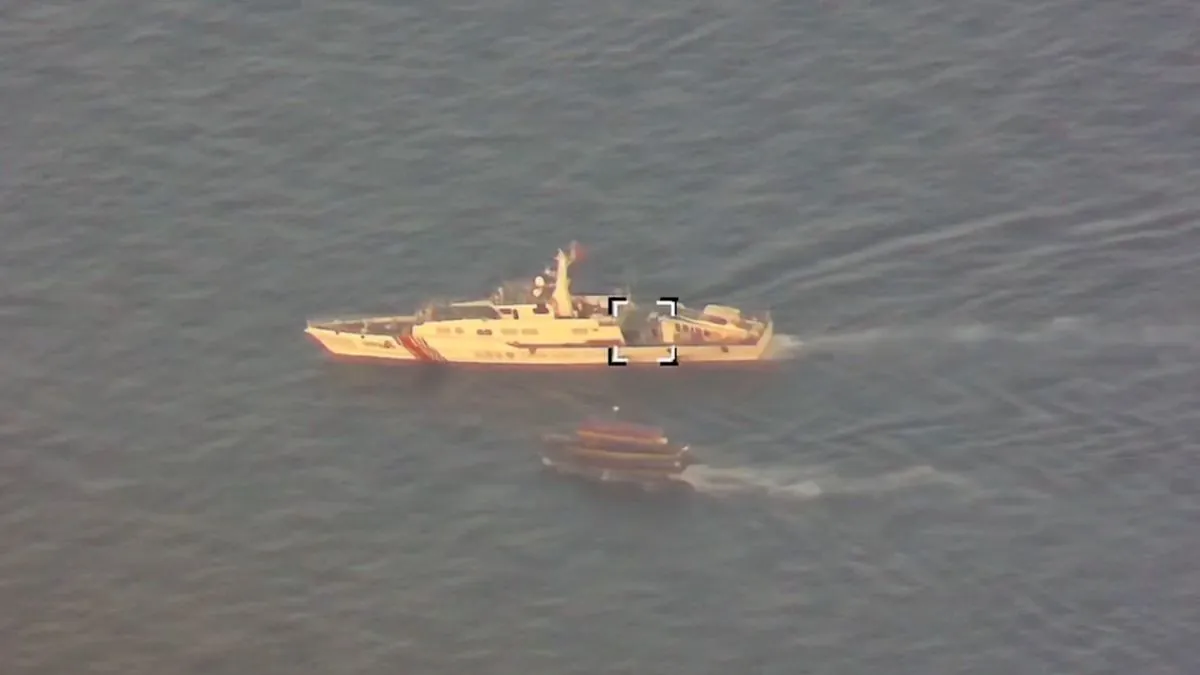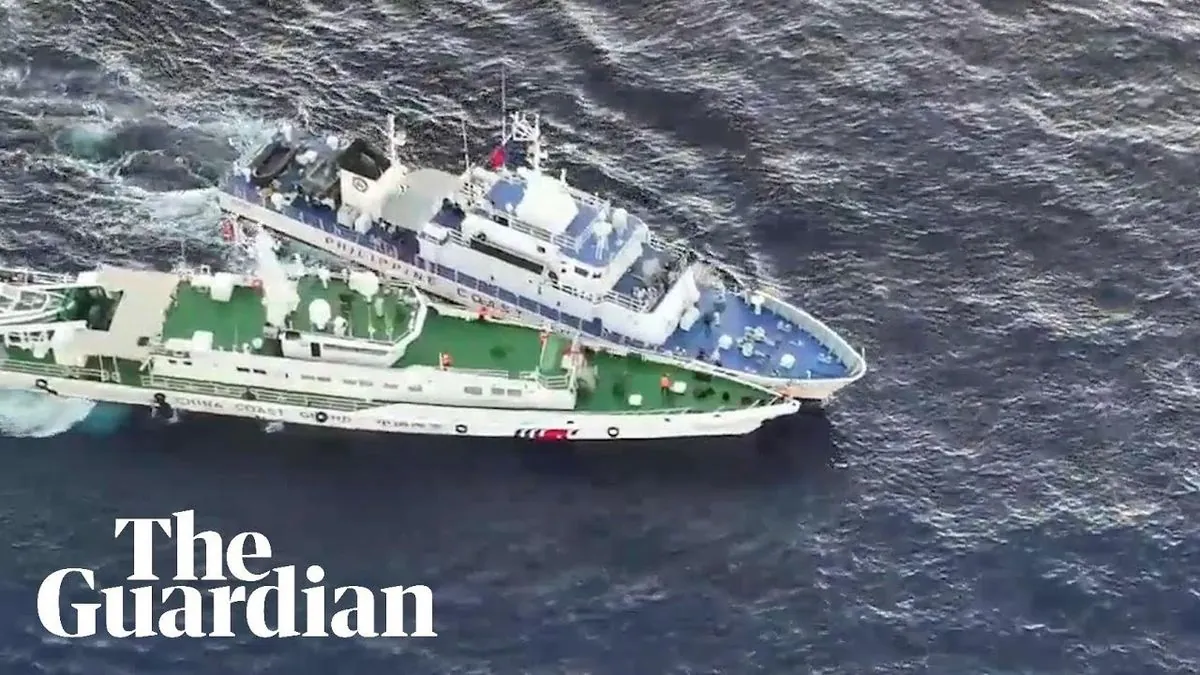Maritime Clash: China and Philippines Collide at Sabina Shoal
Coast guard vessels from China and the Philippines collided at Sabina Shoal in the South China Sea, escalating tensions. Both nations offer conflicting accounts of the incident, which occurred near Philippine territory.

On August 19, 2024, a maritime incident occurred at Sabina Shoal in the South China Sea, involving coast guard vessels from China and the Philippines. This event has heightened tensions in the region, which has been a subject of long-standing territorial disputes.
According to Gan Yu, a spokesperson for the China Coast Guard, a Chinese vessel attempted to prevent a Philippine ship from approaching Sabina Shoal. Yu stated that the Philippine vessel's "unprofessional and dangerous" behavior resulted in a collision, placing full responsibility on the Philippines.
However, Philippine authorities present a different account. They assert that the collision was a consequence of "unlawful and aggressive maneuvers" by the Chinese coast guard. The incident reportedly caused damage to the Philippine vessel BRP Cape Engano, leaving a hole in its deck.

The situation escalated further when another Philippine vessel, the BRP Bagacay, was allegedly rammed twice by a Chinese coast guard ship, resulting in minor structural damage.
This incident marks a significant shift in the ongoing maritime disputes. Sabina Shoal, located approximately 86 miles from the Philippine island of Palawan, is now at the center of attention. It is noteworthy that this location is over 30 miles closer to Philippine territory than Second Thomas Shoal, another contested area.
Ray Powell, director of SeaLight at Stanford University's Gordian Knot Center for National Security Innovation, commented on the situation:
"The battle lines have moved closer to the Philippines. China's efforts to control Sabina Shoal suggests this was a narrow truce. When it comes to its broader claims over the waterway, China is undeterred."
This recent clash highlights the complex nature of the South China Sea disputes. The region, known for its strategic importance, is estimated to hold significant oil and natural gas reserves. Additionally, it serves as a major shipping route, with trillions of dollars in trade passing through annually.
The incident at Sabina Shoal occurs despite a recent agreement between China and the Philippines to reduce tensions at Second Thomas Shoal. This development suggests that while localized agreements may be reached, broader territorial claims remain contentious.
It's important to note that the South China Sea disputes involve multiple countries, including Vietnam, Malaysia, and Brunei. The situation is further complicated by China's Nine-dash line, a demarcation used to claim large parts of the sea.
In 2016, the Permanent Court of Arbitration ruled against China's claims in the South China Sea. However, enforcement of this ruling has proven challenging, and tensions continue to simmer.
As the situation unfolds, the international community watches closely. The Association of Southeast Asian Nations (ASEAN) has been involved in negotiations, while various nations conduct freedom of navigation operations in the area.
The use of satellite imagery and remote sensing technologies plays a crucial role in monitoring activities in this disputed region, providing valuable insights into the evolving situation.
As tensions persist, the incident at Sabina Shoal serves as a reminder of the fragile nature of peace in the South China Sea and the ongoing challenges in resolving these complex maritime disputes.


































